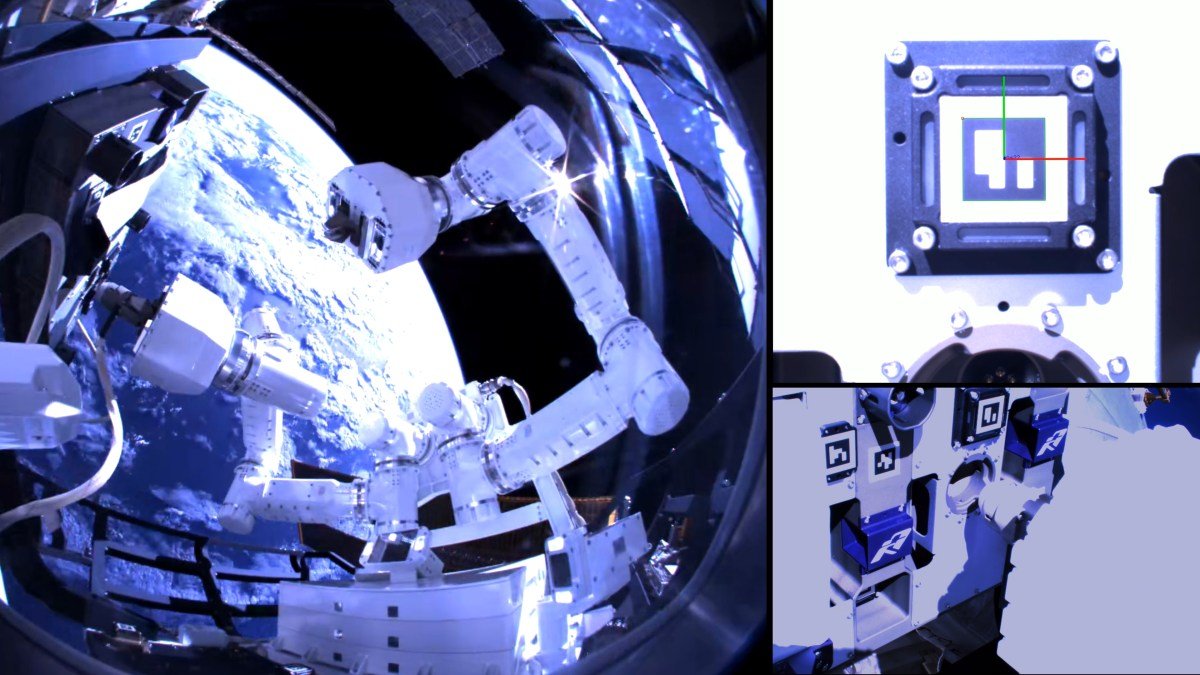Los Angeles-based Gitai announced on Tuesday that its autonomous robotic arm successfully completed a tech demonstration outside the International Space Station. The company’s CEO, Sho Nakanose, revealed in an interview with TechCrunch last year that their aim is to drastically reduce in-space labor costs, similar to how SpaceX and other companies have revolutionized launch costs. While robotic systems still have a ways to go before replacing human labor on Earth, the expensive and hazardous nature of human labor in space presents a promising opportunity for a robotic alternative.
The 1.5-meter autonomous robotic arm, known as S2, was launched to the ISS on a SpaceX Falcon 9 in January. It was then installed externally on Nanoracks’ Bishop Airlock before completing a series of crucial tasks necessary for constructing structures for living and working in space. These tasks included installing a task panel, attaching and detaching a flexible electric cable, and manipulating flexible material.
In the near future, Gitai plans to offer on-orbit satellite servicing for spacecraft in low Earth orbit and geostationary orbit. The company also revealed that they are developing robotic satellites capable of performing tasks related to this market, such as rendezvous, docking, inspection, and de-orbiting, according to a statement.
According to Gitai, their eight-year-old startup aims to launch on-orbit servicing in 2026. The autonomous robotic arm’s technology readiness level (TRL), a standard used by NASA to assess the maturity of technology, is currently at level 7, the highest level possible. Their other product, an “inchworm-type” arm, is also at a TRL 7, indicating a high degree of technological advancement.








